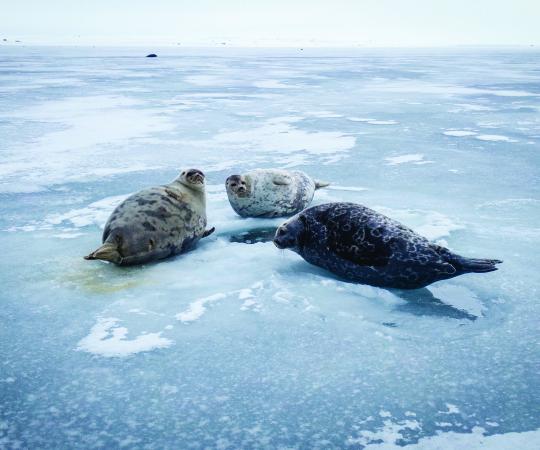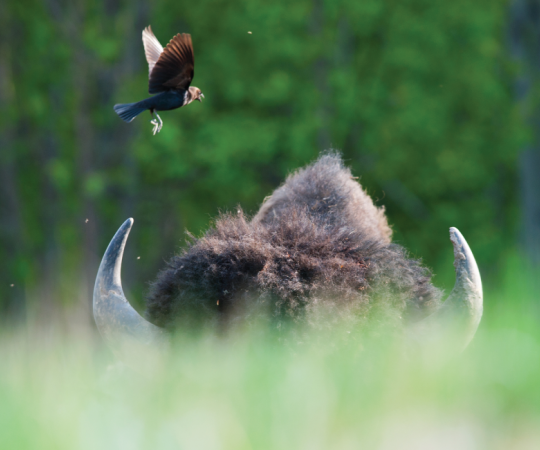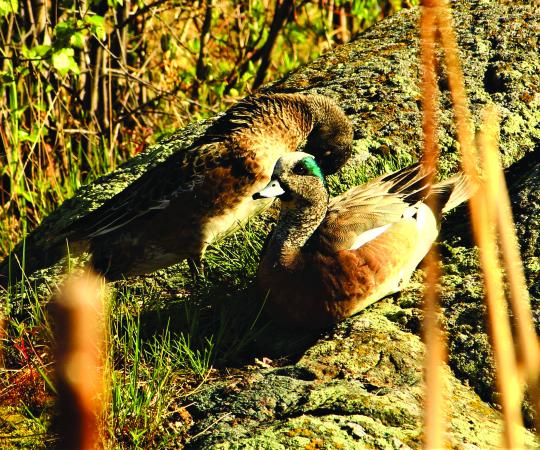Michael Kusugak’s mother wasn’t happy when he left his government job back in 1992 to be a full-time author. So, you can imagine, it meant a lot to see her reaction when he got to tell her he was responsible for bestowing four of Saturn’s moons with Inuit names.
“She said, ‘Wow,’” says Kusugak. “She was proud for the first time since I quit that prestigious job with the government of the NWT.”
For centuries, astronomical objects were named in honour of Greek gods, Roman heroes, and characters from famous European authors, like William Shakespeare. Add the literary work of Michael Kusugak to that list.
Saturn has a lot of moons. Over 80 at current count. The Inuit group—Kiviuq, Ijiraq, Paaliaq, Siarnaq, and later, Tarqeq—was first spotted in 2000 by Canadian astronomer JJ Kavelaars and his colleagues, along with eight other newly discovered small satellites circling the gas giant at a distance 1.2 billion kilometres from Inuit Nunangat.
Kavelaars had family living in Yellowknife at the time who’d previously gifted him a book for his kids. It was Kusugak’s children’s story, Hide and Sneak. Reading the story one night, he was inspired. Wanting to break from the Western, European naming tradition in astronomy, Kavelaars got in touch with Kusugak.
“I had no clue what astronomers were really like,” says the author. “I had this vision of them as old men with beards down to here, white lab coats, white hair all over the place, spending time up on top of some mountain peering out of a telescope into space. I never imagined them having kids.”
The names the two eventually settled on were: Ijiraq, the mythological creature that “hides and sneaks” similar to the moons’ orbits; Kiviuq, the hunter and the most important character in Inuit legend; Siarnaq, another name for the sea goddess Sedna; and Paaliaq, the title character in Kusugak’s book, The Curse of the Shaman, who was named after a friend of his son’s from Naujaat.
“What we decided to do on that particular occasion was we picked names that all ended in ‘q,’” says Kavelaars. “I said, ‘Michael, we got to come up with stuff that’s easy for English people to say.’ He said, ‘Well, you try being Inuit and saying ‘Fredrick.’”
But not everyone was over the moon with the idea. The International Astronomical Union’s nomenclature committee initially rejected Kavelaars’ pitch. They wanted to stick with tradition.
Soon after, by sheer coincidence, Kavelaars was visiting the same building where the subcommittee was meeting to discuss the removal of other astronomical names that were no longer socially acceptable. Scientists who turned out to be Nazis, that sort of thing.
“So I was able to actually make a brief appeal,” says Kavelaars. “Because they were having that conversation about mistakes made in the past… there was an opportunity there.”
With the subcommittee’s eventual blessing, the naming of the Inuit moons helped kick off a reevaluation and expansion of the cultures represented in astronomy. “It cracked open a door and now this is much more common and acceptable,” says Kavelaars.
A fifth moon in the Inuit group was discovered in 2007 and named Tarqeq, after the Inuit moon god. The planetoid Sedna, one of the most distant-known objects in the solar system, is also named after the Inuit sea goddess. Twenty more new moons were discovered orbiting Saturn last year and two of those satellites belong to the Inuit group, though they’ve yet to be named. Meanwhile, in August, NASA announced it would be looking for a new name for an exploding star orbiting two spiral galaxies that had previously and problematically been known as the “Eskimo Nebula.”
“When you don’t see yourself reflected in the language or the people doing something, you feel excluded,” says Kavelaars. “[Astronomy] is open to everybody, as all science should be, so let’s use words and phrases and names that let people see themselves more clearly in what we’re doing.”









